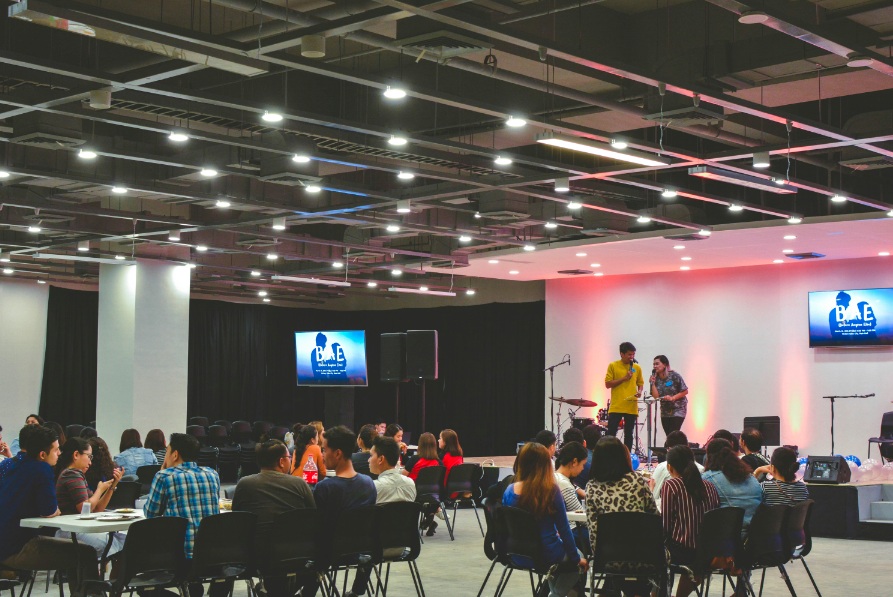Many companies are rediscovering the strength of direct human contact after years of relying heavily on screens. Teams want to read the room, see reactions, and build trust through genuine conversation.
Some firms enhance these gatherings with entertainment that encourages people to relax and talk freely. This can be done with interactive games, live music, inviting comedians, etc. For instance, Jazz music is very popular in the USA. As Time Magazine notes, it is profoundly American. It is an expression of creativity in American society.
A brand can look for jazz bands for hire to set a comfortable tone without overpowering the main business purpose. The goal is not to turn the event into a concert, but to create a setting where attendees feel at ease while meeting others.
Companies have found that a warm atmosphere helps spark conversations that might never start in a purely digital setting. These interactions often lead to follow-up calls, partnerships, or sales discussions. In this article, we will explore many such reasons that encourage brands to turn to in-person gatherings for lead growth.
How Events Support Lead Growth
Brands that invest in face-to-face gatherings see them as opportunities to understand audience needs more naturally. Sales teams can spot interest levels through body language, tone, and subtle cues that are hard to pick up through video meetings. This helps them tailor their approach with far more confidence.
Companies also use these events to test new messaging. When guests react positively to a product demo or presentation, teams can adjust their outreach strategy accordingly. These real-time responses act as a guide for refining pitches, improving marketing materials, and shaping long-term plans.
Therefore, a Forbes article states that events should be part of a company’s marketing strategy. It helps build genuine connections, increase brand visibility, offer data-driven insights, and enable content creation and storytelling. Through events, organizations can stand out from their competition.
Strengthening Brand Identity Through Experience
Live gatherings give companies a chance to present themselves with clarity. Visual elements, interactive booths, and personal conversations all help guests form a strong impression of the business. A well-planned event leaves attendees with a memory tied to the brand rather than just another digital pop-up or email campaign.
Businesses also invite loyal clients to these functions to reinforce existing connections. When long-term customers attend and share their positive experiences, it boosts confidence among new prospects.
A Gartner article suggests that companies should invest in social proof, as it is more powerful than ever. Data show customer reviews influence around 41% of buyers. Similarly, product reviews and comparison sites help them make buying decisions. When new prospects can hear these testimonials live from previous customers, it can strengthen a brand’s identity.
This blend of old and new relationships often creates a dynamic atmosphere that encourages open dialogue.
Why Lead Quality Improves at In-Person Events
Leads collected during live gatherings often show higher engagement later. People who make the effort to attend are usually clearly interested in the topic or industry. This makes them more responsive to follow-ups, reducing the time spent chasing cold contacts.
Events also help companies filter out prospects who are not a good fit. Casual conversations reveal needs, budgets, and expectations early, which helps both sides decide whether collaboration makes sense. This saves time for sales teams and ensures their energy goes to strong opportunities.
A RainFocus survey found that around three-quarters of respondents preferred in-person events over hybrid or digital ones. In fact, 54% of the respondents were even volunteering to travel for face-to-face gatherings. The number increased to 77% among Gen Z and 63% among millennials.
Due to this growing interest in live gatherings, the event management market is witnessing sustained growth. Grand View Research states that its global market was worth $1,160.4 billion in 2024. It is estimated to grow at a CAGR of 6.7% from 2025 to 2033 to reach a whopping $2,089.6 billion.
The Growing Role of Community
Businesses hosting gatherings often notice that attendees start forming micro-communities around shared interests. For instance, suppose a brand has called jazz bands to perform at a business event. In that case, jazz lovers will get an opportunity to connect with each other and form a micro-community.
According to RMF Entertainment, jazz bands are perfect for every type of event. They can play for both small and large groups of people. Moreover, jazz can create a classy and sophisticated environment that can get people talking to each other.
These small groups continue talking long after the event ends, giving the brand more visibility without extra marketing spend. This organic spread of conversation helps keep the brand in circulation within professional circles.
Live events also support long-term loyalty. When individuals associate a company with enjoyable and meaningful experiences, they are more inclined to stay connected. They may attend future events, sign up for newsletters, or explore product updates with genuine interest.
Frequently Asked Questions
Are in-person gatherings useful for small businesses?
Smaller firms often benefit because these events allow them to show personality and build trust on a more personal scale. Guests appreciate being able to speak directly with business owners or team members who understand the product inside and out. This closeness often leads to stronger connections than broad digital campaigns can provide.
What types of locations work best for lead-focused events?
Companies often choose places that encourage conversation without feeling stiff or overly formal. Settings with flexible seating, clear acoustics, and enough space for people to move freely tend to support better interactions. The goal is to help guests feel comfortable approaching others and sharing their thoughts.
How do brands keep guests engaged throughout the event?
Organizers usually plan a steady flow of activities that hold attention without tiring the audience. They may mix short presentations with hands-on demos or informal discussion areas. This variety helps prevent long periods of passive listening and makes it easier for guests to stay active.
Companies that plan to expand their outreach efforts are placing more attention on live gatherings because the personal touch still matters. These events help build trust, clarify expectations, and create conversations that move business relationships forward. As more brands realize the value of physical presence, these gatherings will likely continue shaping how teams connect with prospects and strengthen their network.

